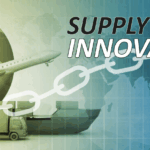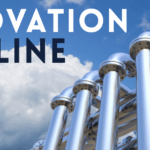What is Augmented Intelligence (AI)?
Augmented Intelligence (AI) is a conceptualization that focuses on AI’s assistive role, emphasizing that AI should augment human decision-making and capabilities rather than replace them. It’s also known as intelligence amplification (IA) or cognitive augmentation.
- Human-AI Partnership: Augmented intelligence is about creating a partnership between humans and AI to enhance cognitive performance, learning, and decision-making.
- Focus on Assistance: AI systems in this context are designed to assist humans in tasks, providing data, insights, suggestions, or automation, rather than taking over entirely.
- Enhancing Capabilities: Augmented intelligence aims to improve human capabilities by leveraging AI technologies to analyze data, identify patterns, and provide support for better decision-making. This approach relies on a variety of underlying technologies, including machine learning, deep learning, machine vision, and natural language processing (NLP), to assist humans without fully replacing them.
It’s important to note that augmented intelligence isn’t limited strictly to AI-powered tools. Traditional technologies that help humans perform tasks—such as data management software—also fit within this concept, as long as they enhance human ability rather than automate it entirely.
Most AI systems supporting augmented intelligence are trained using different learning methods, like supervised, unsupervised, semi-supervised, and reinforcement learning. These methods rely on large volumes of data to help systems learn, whether that’s teaching a machine vision tool to recognize images or enabling an NLP system to interpret and understand human language. This synergy between advanced technology and human expertise is at the core of augmented intelligence.
How does augmented intelligence work?
Augmented intelligence leverages a range of technologies—often including machine learning, deep learning, machine vision, and natural language processing (NLP)—to work alongside humans. These systems are typically trained on vast amounts of data through various learning methods, such as supervised, unsupervised, semi-supervised, and reinforcement learning. This enables them to recognize images, interpret language, and assist with complex cognitive tasks.
While some augmented intelligence tools may not use AI at all (think traditional data management software that helps organize information), many modern examples do. For instance, an AI-powered chatbot can respond to customer inquiries, ask clarifying questions, and then direct the customer to a human agent for further assistance. Here, the AI doesn’t replace the human—it streamlines the workflow, making the human’s job easier and more efficient.
Key functions of augmented intelligence systems include:
- Gathering and processing both structured and unstructured data.
- Analyzing and interpreting information to extract meaningful insights.
- Presenting actionable data and recommendations to support human decisions.
- Automating repetitive or routine elements of tasks, so humans can focus on higher-level problem-solving.
Ultimately, augmented intelligence is about enhancing—not replacing—human abilities. By combining the strengths of human intuition and experience with the speed, accuracy, and breadth of AI-powered analysis, augmented intelligence empowers people to make better decisions and achieve more.

Examples:
- GPS doesn’t drive for you, but it helps you navigate, augmenting your own driving abilities.
- Instead of replacing a human agent, an AI chatbot can be used to aid a human in handling customer interactions.
- Data analysis: AI can analyze data and present it in a digestible format for human action, allowing humans to make better decisions.
Putting Augmented Intelligence to Work
So, how do industries and departments actually tap into augmented intelligence to boost decision-making and run more efficiently? It all comes down to blending the strengths of humans and AI in practical, outcome-focused ways.
- Data-Driven Decision Support: In banking, for example, AI-powered analytics sift through massive data sets—in real time—spotting fraud patterns faster than a human ever could. But the final call? Still up to skilled professionals who know the nuances machines don’t.
- Operational Efficiency: In manufacturing, think of predictive maintenance. AI systems monitor machine performance, flagging anomalies before issues escalate. Maintenance teams can then act proactively, reducing downtime and ensuring smoother operations.
- Empowering Teams: In customer service or IT support, AI chatbots handle routine queries or triage requests, freeing up human experts to tackle more complex challenges. The end result: teams get more time to focus on high-impact tasks.
By focusing on collaboration, industries and departments can transform workflows—making the most of human insight while letting AI handle the heavy computational lifting. It’s not about replacing talent; it’s about supercharging it.
Additional Examples of Intelligence Augmentation
Augmented intelligence extends well beyond navigation and customer service, lending its strengths to a variety of industries and scenarios:
- Predictive Maintenance: In manufacturing, AI models can sift through sensor data from machines to anticipate potential failures before they occur, minimizing downtime and improving reliability.
- Customer Insights: Retailers like Amazon use augmented intelligence to analyze shopping behavior, enabling them to recommend products tailored to each customer’s preferences.
- Healthcare Decision Support: Doctors are using AI tools to assist in diagnosing conditions or suggesting treatment plans by processing large volumes of medical records and recent research.
- Market Analysis: Financial analysts rely on AI-powered platforms to detect emerging trends and patterns across global stock markets, helping guide more informed investment decisions.
- Autonomous Assistance: Commercial pilots and drivers now benefit from intelligent systems that suggest optimal routes, adapt to changing traffic or weather conditions, and provide real-time hazard alerts—always keeping the human in command.
These examples show that augmented intelligence is designed to empower professionals—helping us work smarter, not just harder.
Deeper Insights with Augmented Intelligence
Augmented intelligence takes customer data analysis to the next level. By sifting through past purchases, preferences, and behaviors, AI-powered tools can spot trends that might otherwise go unnoticed. This means businesses can anticipate what customers might want next, suggest tailored products or services, and ultimately offer a more personalized experience.
- Pattern Recognition: AI can quickly identify meaningful patterns in large amounts of customer data, helping teams understand buying habits and emerging interests.
- Personalized Recommendations: Leveraging these insights, companies can recommend items or services that genuinely match what individual customers are likely to enjoy.
- Informed Decision-Making: With comprehensive, easy-to-digest summaries of customer behavior, human teams remain in control—making smarter, data-driven decisions instead of guesswork.
How Augmented Intelligence Supports Sales Forecasting and Product Recommendations
When it comes to sales forecasting, augmented intelligence shines by equipping sales teams with actionable insights derived from historical trends and customer behavior. Instead of simply automating the process, AI tools work alongside humans—helping identify which products are flying off the shelves and which aren’t catching much attention. By identifying these patterns, businesses can make smarter inventory decisions, fine-tune marketing strategies, and even anticipate which products might need a promotional boost on specific dates.
On the recommendation front, augmented intelligence leverages everything it learns about a customer’s preferences and prior activity. Suppose you’ve browsed Amazon and noticed eerily spot-on suggestions—that’s AI acting as your savvy shopping assistant, not your replacement. By analyzing purchase history, browsing habits, and likes or dislikes, these systems highlight products or services tailored specifically for each customer. The result? A more personalized, relevant experience that feels less like guesswork and more like trusted advice.
Customer Analytics and Retention with Augmented Intelligence
Augmented intelligence can elevate customer analytics by helping organizations spot trends and behaviors that might otherwise go unnoticed. For example, advanced AI tools can sift through large volumes of customer data to flag patterns—such as which customers are at risk of leaving or which segments show untapped growth potential.
By providing timely insights and actionable recommendations, augmented intelligence empowers human teams to take proactive steps. This could mean reaching out to a customer before they churn, personalizing offers based on behavior, or identifying emerging needs before competitors do. Rather than relying solely on gut instinct or manual review, analysts gain powerful support in making data-driven decisions that strengthen retention strategies.
With AI as a copilot, companies can move beyond reactive service and instead anticipate customer needs—creating a more engaging and loyal customer base.
Role of Augmented Intelligence in Manufacturing
In the manufacturing world, augmented intelligence steps in as a digital co-pilot rather than an autopilot. While production lines and design processes have always relied on skilled human input, AI systems can now take on the heavy lifting of data-crunching, analysis, and rapid prototyping.
- Design Collaboration: For example, engineers can provide requirements and constraints, and AI-powered design tools (like those in Autodesk Fusion 360 or Siemens NX) will instantly generate a range of design alternatives. This accelerates the brainstorming phase, empowering teams to quickly identify the most practical or cost-effective solutions.
- Optimizing Efficiency: Augmented intelligence also shines in streamlining operations. By sifting through reams of production data, these systems can recommend tweaks to workflows, flag inefficiencies, or even predict machine maintenance needs, enabling human operators to make informed choices that boost productivity.
- Empowering Skilled Workers: Rather than removing people from the equation, IA puts better information and smarter options at their fingertips. Workers remain in control, selecting from AI-generated suggestions to ensure quality and customer value.
In short, augmented intelligence in manufacturing is all about amplifying human expertise—helping teams move faster, decide smarter, and maintain a hands-on role even as technology evolves.
Applications:
Augmented intelligence can be applied in various domains, including healthcare, education, business, and entertainment. While artificial intelligence (AI) aims to create systems that can perform tasks autonomously, augmented intelligence focuses on using AI to work with humans, not instead of them.
Healthcare
In the healthcare sector, augmented intelligence is transforming how providers deliver patient care. By integrating AI-driven tools for data analysis, diagnostics, and administrative tasks, healthcare professionals can improve the quality of care and make more informed decisions. For example, augmented intelligence systems help reduce the risk of medical errors associated with manual data entry and streamline complex processes such as billing, payments, and claims. This partnership between clinicians and intelligent systems not only increases efficiency but also enhances patient outcomes by supporting doctors and nurses with real-time information and actionable insights.
Other Domains
Beyond healthcare, augmented intelligence is redefining how we learn, manage businesses, and even enjoy entertainment. In education, AI-powered platforms personalize learning experiences and assist teachers with grading and curriculum planning. In business, augmented intelligence offers advanced analytics and decision support, empowering teams to identify market trends and optimize operations. In entertainment, augmented tools help creators generate content and tailor experiences to individual preferences.
By leveraging the strengths of both human intuition and machine precision, augmented intelligence is setting the stage for smarter, more collaborative solutions across industries.
Where Augmented Intelligence Shines
- Customer Analytics: Augmented intelligence tools can help businesses discover high-risk or high-potential customers. By analyzing customer data, these systems quickly identify which consumers are likely to churn or engage, alerting teams before opportunities are lost.
- Sales Forecasting: Leveraging historical purchase data, augmented intelligence assists sales teams in predicting trends, identifying top and underperforming products, and even anticipating which items are likely to become popular—all of which can directly impact revenue.
- Deeper Data Understanding: Instead of combing through endless spreadsheets, teams can use augmented intelligence to uncover customer preferences, purchase patterns, and recommend products or services tailored to individual needs.
Industry Use Cases
- Healthcare: Augmented intelligence enhances patient care by providing clinicians with better decision support, reducing manual errors, and streamlining processes such as billing and claims. For example, it can analyze patient histories to suggest more effective treatment options or flag potential risks.
- Finance: In the financial sector, small mistakes can have big consequences. Augmented intelligence helps financial planners personalize services, manage risk, and catch manual errors before they become costly, all while adapting to customer goals and profiles.
- Manufacturing: Complex manufacturing processes benefit from augmented intelligence by accelerating design, optimizing supply chains, and predicting machine maintenance needs. Workers can input parameters and receive a range of optimal design choices generated in seconds.
- Oil and Gas: With its many variables, the oil and gas industry uses augmented intelligence to streamline operations—such as drilling and site selection—by providing accurate measurements, identifying favorable conditions, and improving efficiency.
Common Applications Across Sectors
- Predicting equipment maintenance schedules
- Anticipating customer behaviors and preferences
- Identifying effective treatment options in healthcare
- Spotting emerging market patterns
- Enabling autopilot features in vehicles and machinery
Ultimately, the promise of augmented intelligence is to elevate human expertise, helping people understand and interpret complex data, make better decisions, and manage risk—empowering humans and machines to achieve more together.
What is Artificial Intelligence?
Artificial Intelligence, or AI, refers to the intelligence displayed by machines, where they are trained to mimic human-like work and reactions to improve performance. AI systems are developed to understand logic, solve problems, plan, interpret natural language, recognize faces and speech, and manage vast amounts of knowledge. The overarching goal is to create machines that can learn from data, adapt over time, and make decisions or predictions—sometimes independently of human intervention.
In the context of augmented intelligence, however, these powerful AI capabilities are leveraged to support and enhance human decision-making, ensuring that technology acts as a cognitive partner rather than a replacement. This distinction is crucial across industries where the nuance and expertise of human judgment remain essential, even as AI provides deeper insights and greater efficiency.
How Augmented Intelligence Supports the Finance Sector
Augmented intelligence is transforming the finance industry by enhancing the way professionals analyze data and serve clients. Rather than replacing financial experts, AI-powered tools act as copilots, handling complex calculations, sifting through massive datasets, and flagging anomalies that might otherwise go unnoticed.
- Personalized Financial Planning: With access to AI-augmented insights, advisors can craft more tailored strategies based on each client’s unique goals, risk tolerance, and behavior. This leads to smarter investment recommendations and more responsive service.
- Minimizing Errors: By automating repetitive tasks—think number crunching, transaction monitoring, and compliance checks—augmented intelligence helps reduce human errors and boosts overall accuracy in financial reporting.
- Faster, Data-Driven Decisions: Tools like Bloomberg Terminal and IBM Watson allow analysts to process information from countless sources in real time, making it possible to identify trends, opportunities, or risks far more quickly than could be achieved manually.
Ultimately, augmented intelligence in finance equips both advisors and clients with better information and greater confidence when making critical decisions.
How Augmented Intelligence Transforms Oil and Gas Operations
Augmented intelligence is quickly becoming a valuable asset in the oil and gas industry, where precision and efficiency matter at every stage. By integrating AI-driven insights into operational workflows, companies can elevate everything from drilling to resource management.
- Smarter Decision-Making: IA-powered systems analyze vast amounts of geological and environmental data, giving field teams real-time recommendations for optimal drilling sites and safe working conditions.
- Improved Accuracy: Instead of relying solely on manual readings, AI tools assist workers in capturing precise coordinates and measurements, reducing human error and minimizing costly mistakes.
- Greater Efficiency and Safety: Augmented intelligence doesn’t replace skilled professionals, but rather supports them. For instance, predictive analytics can help foresee equipment issues or unfavorable conditions before they escalate, speeding up operations while reducing risk to personnel and the environment.
Combining human expertise with advanced technology enables oil and gas companies to work smarter, not harder—boosting productivity and safety without sacrificing the vital judgment that only people can provide.
Expand your understanding of how AI is transforming innovation and technology scouting. Check out these other resources for actionable insights:
→ Innovation Analysts for Technology Research – Explore the synergy of AI and human expertise in driving innovation strategies.
→ AI and Innovation Management – Learn how AI-driven tools are revolutionizing innovation management for competitive advantage.
→ AI-Driven Solutions for Technology Scouting – Discover how AI enhances technology scouting with real-time insights and smarter decision-making.
→ AI-Powered Predictive Maintenance and Aviation Safety – Predicting potential equipment failures and data enhanced risk mitigation.
Example Use Case
Industrial Robotics Firm Leverages AI Autonomy & Augmented Intelligence (AI-Driven R&D)
Challenge:
Scaling warehouse automation while expanding into AgTech and Pharma robotics requires balancing AI efficiency with human strategic oversight.
Horizon Planning Strategy:
Horizon 1 (0-2 Years)
AI Deployment:
-
- Integrate autonomous navigation algorithms (reinforcement learning) to improve warehouse robot pick-and-place speed by 40%.
- Use predictive maintenance AI to reduce downtime by 25%.
Horizon 2 (2-5 Years)
Augmented Intelligence for R&D:
- Develop an AI Innovation Assistant that synthesizes market data, patent trends, and expert feedback to identify AgTech opportunities.
- Humans prioritize projects using AI-generated risk/reward profiles, ensuring alignment with technical feasibility and regulatory constraints.

Horizon 3 (5+ Years)
AI/IA Synergy for Moonshots:
- Deploy AI swarm robotics for disaster response, using real-time terrain mapping and adaptive coordination.
- Augment human operators with IA dashboards that translate mission priorities into dynamic swarm behavior adjustments, preserving human oversight in crisis scenarios.
Targeted Outcomes:
→ 30% revenue growth in warehouse automation.
→ Pilot contracts in agricultural robotics (e.g., AI-powered crop monitoring).
→ Government grants for IA-enhanced disaster-response systems.
Key Takeaways for Innovation Professionals
- AI vs. IA Clarification
- Use AI for autonomous tasks (predictive maintenance, swarm coordination).
- Apply IA for human-AI collaboration (R&D prioritization, crisis response dashboards).
- Horizon Bridging
- Short-term AI gains (e.g., warehouse speed) fund IA tools for long-term strategic agility (e.g., AgTech market entry).
- Cross-Industry Synergy
- Transfer AI advancements (e.g., autonomous navigation) from warehouses to AgTech, while IA tools from Pharma R&D inform disaster-response innovation.
How can Ezassi help support your Horizon Planning Strategy? Connect with an Innovation Analyst.






